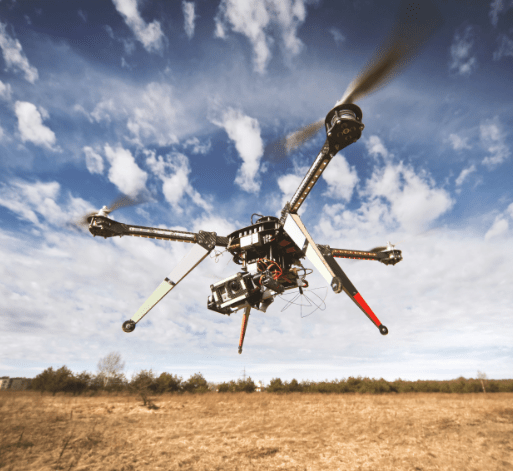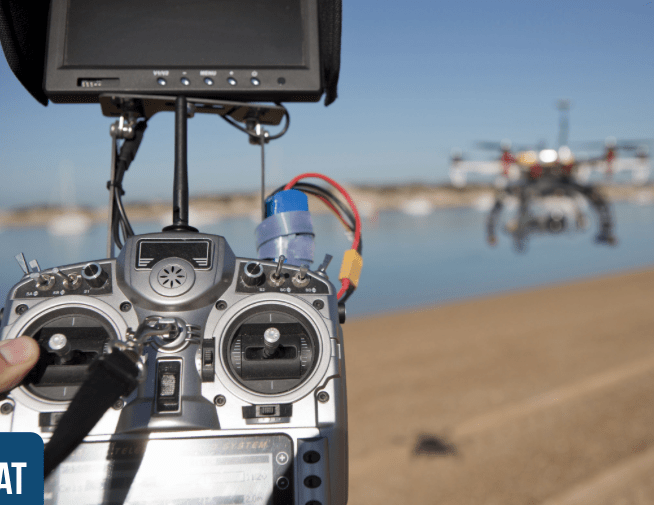
Nevada’s Aerodrome really is the world’s first to get up and running – but Jonathan Daniels, the President and Chief Compliance Officer, doesn’t like to harp on it.
Daniels is a friendly guy – and within about a minute it’s clear that while he’s taken a businessman’s approach to solving a problem, he has an academic zeal and passion for helping the drone industry innovate. That’s not surprising, based on his resume: with a career in unmanned systems that began in the Army and continued to include advisory positions on a variety of industry boards and academic positions at Embry-Riddle and the University of Nevada, Daniels has spent years teaching everyone he can reach about the benefits of drones. Hence the development of the Aerodrome: the first commercial airport for unmanned aircraft.
While “commercial airport” is accurate, it doesn’t fully describe the Aerodrome facility. Daniels talks about the concept by explaining that just as some hospitals are teaching hospitals, responsible for training the next generation of professionals, so are some airports teaching airports. But demand for training and testing opportunities – particularly for drones – outweighs supply. “Airports are busy places and have a hard time fitting training opportunities in – so we built our own,” Daniels tells DRONELIFE.

The Aerodrome offers training classes, testing facilities, and a droneport – that would be an airport, just for drones. About the training classes – including maintenance, flight, engineering and regulation courses – Daniels points out the value in having standardized training for a new industry. “Every class ends in a certification,” he says, commenting that the Aerodrome is planning ahead as regulation evolves. “We already have night flight classes planned.”
Training classes help to build the workforce: but it’s the testing facility that has proven invaluable to the industry as new technology emerges. The indoor facility – over 7000 square feet

– allows industry to test all aspects of drone flight, including Beyond Visual Line of Sight (BVLOS) while still conforming to FAA regulations. With a completely commercial model, unlike many federally affiliated test sites, the Aerodrome can offer testing facilities sometimes within 24 hours of a request; a critical benefit for companies working on development of new technology.
And then there is the droneport. The 50 acre facility provides temporary working space, a pilots’ lounge, a 500 foot runway, landing pads, and charging stations. Daniels sees the droneport as a potential model for helping industry and regulators work together to get BVLOS and night flight implemented; by using a droneport, he explains, protocols could be standardized.
“The biggest challenge for commercial drones and BVLOS flight is the entry and exit point into NAS. Because we’re so used to the idea of no rules… to get away from that we need to standardize how we enter and exit the NAS. It doesn’t have to be an airport – but there have to be rules.” Daniels hopes that offering more facilities for testing and getting more flights into the air will help to move regulations forward. “BVLOS flight could be soon under certain circumstances. Who needs it first? Could we get it for firefighters first? For Emergency responders? For rural delivery? I’m highly optimistic,” he says.

In addition to all of the testing and training facilities available, the Aerodrome has become a center for the drone community. “We welcome recreational hobbyists, we host drone races every week – that’s where the community is,” says Daniels. “That’s what a droneport should be…available to the ecosystem.”
And about any other droneports under development? Daniels hopes they’ll come online soon, and he’s willing to help. “We take a blue ocean approach – there’s plenty of room for everyone. This is a giant marketplace,” he comments. “Let’s build it, let’s show everyone how to do it. “

Miriam McNabb is the Editor-in-Chief of DRONELIFE and CEO of JobForDrones, a professional drone services marketplace, and a fascinated observer of the emerging drone industry and the regulatory environment for drones. Miriam has penned over 3,000 articles focused on the commercial drone space and is an international speaker and recognized figure in the industry. Miriam has a degree from the University of Chicago and over 20 years of experience in high tech sales and marketing for new technologies.
For drone industry consulting or writing, Email Miriam.
TWITTER:@spaldingbarker
Subscribe to DroneLife here.







[…] post Nevada’s Aerodrome: This One Really is the World’s First appeared first on […]